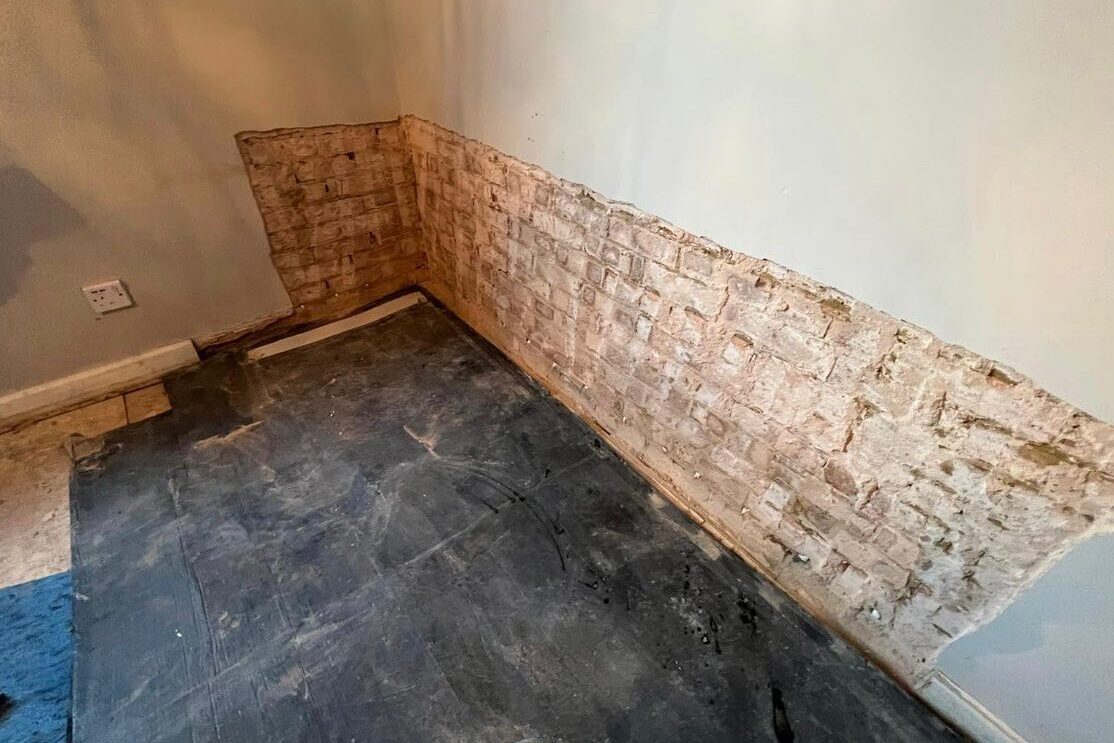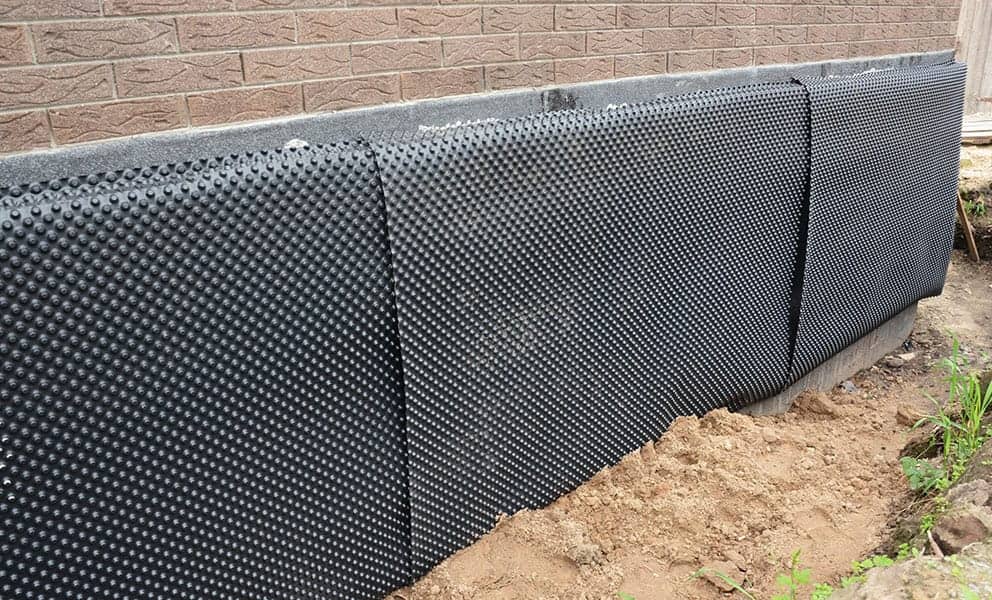What to expect when you hire a mould treatment newcastle expert
What to expect when you hire a mould treatment newcastle expert
Blog Article
Exploring the Numerous Strategies and Solutions for Effective Damp Proofing
Moisture in buildings postures significant challenges to both structural integrity and indoor air high quality. Various strategies and options have actually emerged to battle this pervasive concern. From traditional damp-proof membranes to innovative chemical treatments, each technique uses one-of-a-kind advantages. Comprehending these choices is vital for efficient dampness control. Nonetheless, choosing the right service depends upon specific building conditions and demands, motivating further exploration into one of the most efficient damp proofing strategies offered.
Understanding the Reasons For Dampness
Although wetness can emerge from various sources, understanding these reasons is important for effective removal. Frequently, moisture stems from 3 main sources: climbing wet, penetrating wet, and condensation. Climbing moist occurs when groundwater takes a trip upwards with porous products, such as brick or rock, usually as a result of a lack of a reliable obstacle (mould treatment newcastle). Passing through moist is generally created by outside variables, including roof covering leaks, faulty seamless gutters, or harmed wall surfaces, allowing water to infiltrate a residential or commercial property. Condensation, on the other hand, arises from excess dampness in the air, usually worsened by bad ventilation and temperature distinctions, bring about water droplets basing on surface areas. Identifying these underlying issues is necessary, as each sort of wetness requires a tailored technique for removal. Correct assessment aids in identifying the most reliable remedies, ultimately securing the architectural honesty of a structure and improving interior air top quality
Conventional Damp-Proof Membrane Layers

Chemical Damp-Proofing Solutions
Chemical damp-proofing solutions use an innovative strategy to stopping moisture breach in buildings. These methods generally entail the application of liquid chemicals that permeate masonry and develop a barrier against climbing moist. Generally utilized chemicals consist of silanes, siloxanes, and other water-repellent agents that respond with surface area products to create a hydrophobic layer.The application procedure usually needs exploration holes into the wall surfaces, infusing the chemical option, and allowing it to heal. This technique is especially beneficial for older frameworks where standard damp-proof membrane layers may be not practical. Chemical damp-proofing can be less disruptive and much more economical than extensive renovation projects.While effective, these solutions depend on appropriate application and ecological conditions for peak efficiency. mould treatment newcastle. Regular maintenance and tracking are necessary to guarantee the durability of the damp-proofing therapy. Overall, chemical damp-proofing represents a flexible option for protecting buildings against moisture-related damages
Tooth Cavity Wall Surface Building And Construction Methods
Dental caries wall surface building methods provide countless benefits, especially in wetness control and energy performance. By incorporating an air void in between 2 layers of stonework, these wall surfaces effectively minimize water access while improving insulation. This combination not only shields structures from wetness but also contributes to reduced power consumption.
Benefits of Dental Caries Walls
When taking into consideration efficient wet proofing approaches, the advantages of dental caries walls stick out prominently. Dental caries wall surfaces contain two different layers, developing an air space that effectively minimizes wetness penetration. This design decreases the threat of wetness, as the outer wall acts as an obstacle against rain and water ingress. Additionally, cavity wall surfaces enhance thermal insulation, which adds to energy effectiveness by minimizing warm loss. They likewise supply audio insulation, helping to produce a quieter interior environment. Additionally, the air void permits ventilation, which aids in wetness control and lowers the likelihood of mold growth. These benefits not only enhance the overall comfort of a building however additionally add to its longevity and architectural integrity.
Wetness Control Methods
Efficient wetness control approaches are vital in cavity wall building and construction to ensure lasting security against dampness. One primary method involves the unification of weep openings, which promote water drainage from the cavity, protecting against buildup. Furthermore, using breathable membranes can assist take care of moisture levels while enabling trapped vapor to get away. Appropriate positioning of insulation is also essential, as it needs to not block drainage paths. Furthermore, making sure that the external leaves of the dental caries wall are constructed with water-resistant materials improves general durability. Routine maintenance checks are vital to identify any blockages or damage early, securing the structure's honesty. Ultimately, a mix of these strategies develops a durable defense against wetness intrusion in tooth cavity wall surfaces.
Insulation and Energy Performance
Insulation plays an important role in improving power performance within tooth cavity wall building and construction. By incorporating insulating materials, these walls produce a thermal barrier that lessens warm loss and reduces energy intake. Efficient insulation not just aids keep a stable interior temperature level but also minimizes the threat of wetness, as it protects against condensation within the wall dental caries. Various methods, such as the usage of rigid foam boards or mineral woollen, can be employed to accomplish ideal insulation efficiency. Furthermore, appropriate setup is vital to assure that gaps and voids are minimized, which can otherwise compromise energy performance. Eventually, a well-insulated cavity wall surface contributes significantly to general sustainability and reduces cooling and heating prices for home owners.
External Damp Proofing Techniques
Exterior wet proofing methods are crucial for safeguarding frameworks from wetness seepage. 2 effective techniques include the application of water resistant membrane layers and the setup of French drains pipes. These options help alleviate water accumulation and maintain the integrity of structures.
Waterproof Membrane Application
While various approaches exist for stopping moisture ingress, the application of waterproof membranes stays a highly effective external wet proofing strategy. These membranes are typically made from products such as polyethylene, rubber, or customized asphalt, giving a robust barrier against water penetration. The installment process involves applying the membrane to the external surface areas of structures or walls, ensuring complete coverage to prevent leaks. Appropriate attachment and securing at joints are essential to maximizing effectiveness. Water resistant membranes can be used in numerous types, consisting of fluid layers and sheet membranes, enabling flexibility based on the particular demands of the framework. This technique not just safeguards structures from wetness however additionally enhances their longevity and structural stability.
French Drain Installment
One efficient approach for taking care of groundwater and preventing moisture buildup around a structure's foundation is the installation of a French drain. This water drainage system contains a trench loaded with gravel and a perforated pipe that redirects surface area water away from the structure. Correct installment requires mindful preparation, guaranteeing that the drainpipe slopes far from the framework to facilitate perfect water circulation. Additionally, the area of the drain is crucial; it needs to be positioned in locations susceptible to merging or excess moisture. Routine upkeep, consisting of clearing debris from the gravel and guaranteeing the pipeline remains unobstructed, is crucial for long-lasting efficiency. Ultimately, a well-installed French drainpipe can substantially lower the danger of water-related problems in structures and basements.
Inside Waterproofing Approaches
Interior waterproofing methods are vital for securing a building's interior from moisture seepage and possible water damage. These approaches normally involve the application of specialized materials and methods developed to produce a dampness obstacle within the structure. One typical technique is using water-proof finishings or sealers on wall surfaces and floors, which protect against wetness from passing through surfaces.Additionally, installing indoor drain systems, such as sump pumps, can efficiently take care of water accumulation in basements and creep rooms. One more approach entails the use of vapor barriers, which are mounted to inhibit moisture movement from the ground right into living spaces.Moreover, addressing any type of fractures or spaces in walls or structures with suitable sealants guarantees a comprehensive protection against water intrusion. By executing these interior waterproofing approaches, residential property proprietors can greatly reduce the danger of mold growth, architectural damages, and other moisture-related issues. Correct execution of these strategies is necessary for long-term defense and structure stability.
Normal Maintenance and Inspection Practices
Routine upkeep and evaluation methods are vital for ensuring the lasting effectiveness of wet proofing services in any type of structure. Routine checks allow property owners to identify very early indications of dampness intrusion, such as peeling off paint, mold and mildew development, and moldy odors. These signs can indicate underlying issues that call for immediate attention.Inspections ought to be performed at the very least every year, concentrating on at risk areas like cellars, crawl rooms, and exterior walls. During these analyses, homeowner should check out sealants, drainage systems, and air flow to verify they function correctly.Additionally, preserving downspouts and seamless gutters is essential, as blocked systems can lead to water buildup near the structure. Applying a normal maintenance schedule, along with timely repair services, can considerably prolong the life-span of moist proofing measures and secure the architectural stability of the structure. Positive measures ultimately add to the overall wellness and security of the living atmosphere.
Frequently Asked Inquiries
For How Long Does Damp Proofing Usually Last?
The period of moist proofing performance differs, normally lasting between 20 to 50 years. Aspects such as application top quality, ecological problems, and maintenance techniques greatly influence the long life of the wet proofing treatment.

Can I Damp Evidence My Home Myself?
The individual pondered the usefulness of DIY damp proofing. With proper research study and the ideal products, it is possible. However, they likewise recognized the relevance of professional advice to guarantee resilient effectiveness and prevent future problems.
What Are the Indicators of Inefficient Damp Proofing?
Signs of inadequate damp proofing consist of consistent mildewy smells, visible mold growth, peeling paint, moist spots on walls, and timber degeneration - damp removal newcastle. Home owners should attend to these problems immediately to prevent further damage and health issues
Does Damp Proofing Affect Indoor Air Quality?

Just How Much Does Specialist Damp Proofing Price?
Specialist moist proofing expenses vary considerably, generally varying from $1,000 to $5,000 depending upon the building's dimension, the degree of the moist issue, and selected techniques. Each circumstance needs a customized assessment for exact rates. Commonly, dampness originates from three main sources: rising moist, penetrating damp, and condensation. When considering reliable moist proofing approaches, the benefits of cavity wall surfaces stand out prominently. Exterior damp proofing methods are necessary for protecting frameworks from dampness seepage. While different methods exist for protecting against dampness ingress, the application of waterproof membranes stays a very reliable external wet proofing technique. Indicators of inadequate wet proofing consist of persistent more info moldy smells, visible mold development, peeling paint, damp spots on wall surfaces, and wood degeneration.
Report this page